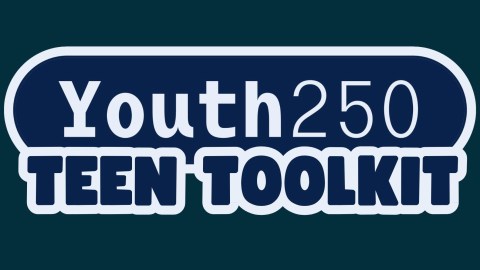
For the past several years, the Corning Museum of Glass (CMoG) has been working to draft a long-range DEI&A strategic plan, with input from the museum’s cross-departmental DEI Matrix Team as well as leadership and departmental managers. Like the plans of many other museums, ours includes recommendations for actions across the institution and in all aspects of how we work. One institutional change we have implemented this year is to be transparent about minimum salary levels when posting job opportunities. Until recently, CMoG had not shared this information in job postings, though we recognized that it was a growing trend and a requirement for many museums, including those which receive federal, state, or city funds or are located within university or college systems.
Museums that currently don’t include salary information with job postings have determined their own reasons for not doing so, but my sense is that they are becoming a minority. The field recognizes that museums which decline to are potentially losing terrific applicants for their positions who will not apply for a job that lacks salary information for a variety of reasons, such as affordability of living in an area, career salary goals, and equitable compensation.
While CMoG leadership and staff had desired and discussed including salary information with our job postings for many months, we proceeded cautiously in rolling out this new approach in order to minimize internal ripples. Our implementation strategy included educating our existing staff about the complex and multi-stepped process of determining a salary, starting with factors including the job and its level of responsibility, whether the position is supervisory, and what experience and qualifications are required. Additional considerations included external benchmarks for similar positions and levels of responsibility, such as the AAMD salary survey, as well as internal equity analyses across similar roles.
We anticipated that sharing salaries with job postings could cause staff throughout the organization to compare posted salaries with their own and question if their compensation was fair. We recognized that we might receive requests for additional information and salary increases as a result, and that we needed to encourage and empower staff to ask these questions.
With our Chief Human Resources Officer leading the way, we discussed an optimal multiple-step process for introducing and implementing salary transparency in job postings. First, we would use an outside consultant to undertake compensation analysis across all jobs to ensure that salaries were calibrated appropriately by job to the field, to our region, and for internal equity. We wanted to share with staff that determining salary ranges is both a science and an art; many factors are considered in the process, from experience and required qualifications to local cost of living. We also wanted to make space for open dialogue about salaries. When we identified all the elements of this ideal plan, we recognized that it would take months to implement and complete—and for the past two-and-a-half years, we have been lacking enough people, time, and money to make this happen.
We nevertheless decided in 2021 to take a step forward by posting our new paid museum guide positions with the hourly wage for the job. After the positions were posted, I was relieved to learn that there was little to no negative reaction from staff. So far so good.
At the end of 2021, we hired a firm with whom we had worked in the past to conduct two job searches. The firm let us know that they had changed their internal policies and now required salary information to be posted with the positions. In addition, some of the job sites on which we wanted to post these positions also now had salary transparency requirements. These circumstances pushed us to expedite our decision to post our salaries for all jobs. Our comprehensive, multi-step staff preparation plan was condensed, and a communications team put together a short presentation to share the plan with staff. It was communicated first to managers and supervisors for their questions and to help them prepare for possible discussions about salaries with their teams, and then with the entire staff. The communication addressed what we were doing, why were we doing it, and when it was going to take place. After the salary transparency plan was presented, staff had ample opportunity to ask questions, including in an all-staff setting, via anonymous question submission, and in small-group settings with HR.
And then the job posting process commenced! In addition to adding minimum salaries to new positions being posted, we simultaneously updated our existing job postings with salary information. Staff and manager feedback to this process change was very positive and all saw it as a good, public-facing commitment to our greater DEI&A efforts.
This practice has been underway since April 2022, and we have seen some of the anticipated results. We know we are interviewing applicants whose salary expectations are in line with what we offer. Some staff members have asked to discuss their compensation compared to that of posted positions, and they have been welcome to do so. In some instances, but not all, salary adjustments have been made based on additional analysis of the specific situations.
We still plan to undertake the compensation analysis when we can, and when we have that data, we’ll respond to it by evaluating, and, if needed, modifying our salary ranges for our jobs. In the meantime, I’m glad we’ve taken this step. Our staff appreciates that by doing this, we’re furthering this trend across the museum field and supporting more transparency. I hope that by sharing our story, other museums may determine to change their practices as well. In some states, this decision has already been made for them, or will soon be, with legislation passed making transparency a requirement. This is in the case in our own state of New York, but we preferred to get there ahead of that moment rather than be faced with a characterization that we only took this step because the law now required it. And in case you missed the announcement, as of November 15, 2022, any job posting to AAM’s list will now require salary information.









Is it possible that the critical factor in making the decision to post salaries was not an internal process (which was slated to involve a long-term study and roll-out), but the external pressure from a search firm and organizations that post museum-related job openings? If so, kudos to those organizations who were leaders in DEAI and transparency – years before AAM followed suit.
One of the benefits of working in a government owned museum is our wages are publicly available and all open positions wage and step ranges are listed, even for part time employees. In our state anyone can look up what any government official’s salary. Having been in the museum business 20 plus years this is a very good thing to have museums publish solid job descriptions and compensation. I was hired as and executive director for a second County museum in the early part of my career and salary was discussed during interviews but not nailed down. The first pay day the non profit president asked me what my salary was and I said we discussed the range but an exact amount was not decided. She said so what to you think? I said $50,000 and she said the board would never go for that. I said, well, as ED you need to pay me more than the part time Curator makes on an hourly scale. $49,999.99 is what my W-2 said for that year. Bravo to museums getting transparency in hiring process. Prospective new employees should know what is expected of them and how they will be compensated. It is not only the ethical thing to do it is the right thing for the career field and it dedicated employees.